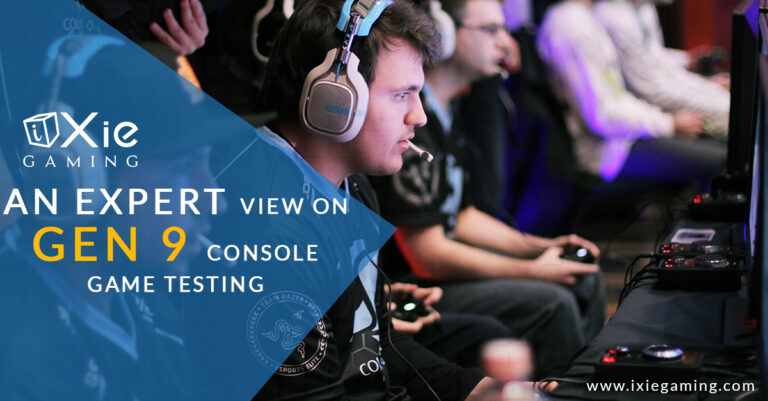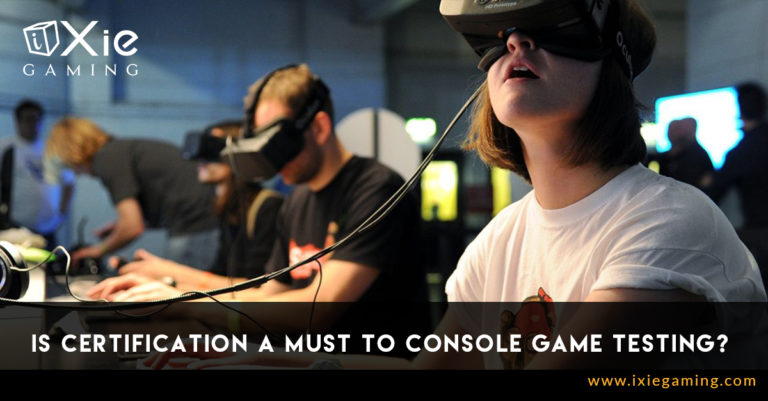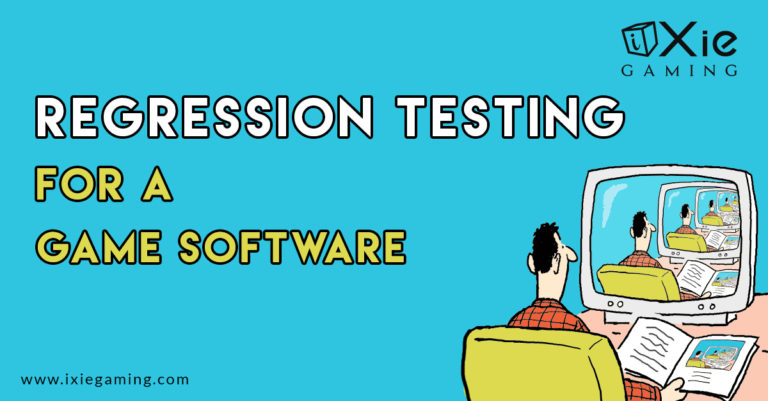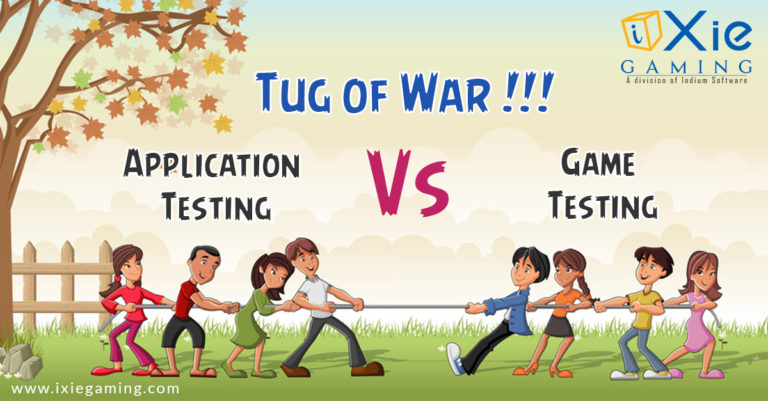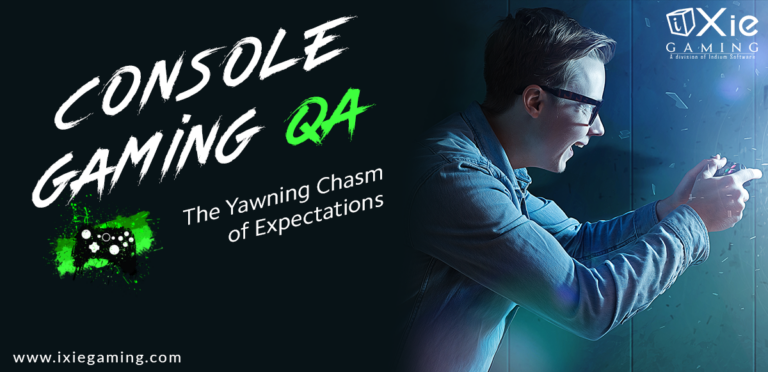Virtual reality (VR) games have become popular in recent times. These games are more immersive and allow players to engage with both real and virtual worlds. As part of quality assurance or QA services, VR testing is essential. It helps you assess your VR app or game to see what works and what doesn’t work as intended. Also, it helps you gain insights into how to improve your VR game or app, identify potential bugs, and remove any issues that may affect their performance.
But what is VR? What is VR Game testing? And what does VR testing entail? As a leading QA service provider, iXie takes a deeper look into VR testing essentials to help you effectively test your VR application in this comprehensive guide.
What is VR?
VR is an artificial environment built by software. This environment is 100% immersive and supported by several critical physical devices, a computer/ mobile phone/ console, and a headset. VR apps immerse users in a computer-generated ecosystem that simulates the real environment through the use of interactive devices. These devices receive and send information and are worn as headsets, body suits, gloves, or goggles. As a result, they create a more engaging experience.
What is VR Testing?
The tech world is constantly evolving. VR applications have made their own space in the global market thanks to their advanced capabilities. Ensuring these applications function as expected and immerse users as they should is crucial. And that’s where VR testing, one of the key Game QA services, comes in handy.
One of the fundamental aspects of VR testing is usability. This aspect outlines how easily users can use a specific VR app. It’s essential to ensure users can utilize a VR app with ease. This is because VR applications are more complex and truly immerse users in a virtual environment. Therefore, if the developers and QA services do not focus on usability, users will not be able to interact and experience the power of the VR app. But how do you ensure the usability of VR applications? Let’s find out.

VR Usability Testing with Users
The only way to test something’s usability is by utilizing it. So, usability tests involve short sessions where potential users engage with the VR application in a specific (test) environment. During these sessions, QA experts observe, record, and measure the course of the users’ interaction.
In VR usability testing, these session-based tests are crucial. They help the QA services team explore the app’s functionality and usability in the real environment. Usability tests are performed when the application and prototypes are ready. This ensures the test result reflects how the actual users interact with the VR app.
However, we recommend testers conduct heuristic tests before engaging in usability testing. It enables them to identify and fix many issues before performing usability tests. Therefore, the user gets the best VR app the team could create during usability testing. The usability testing sessions help identify issues that couldn’t be spotted by the QA services team.
How to Perform VR Usability Testing
Here’s a quick guide to VR usability testing:
1. Recruit Participants
Recruit several members (minimum 5) who will perform usability tests. This is crucial as it helps you gather opinions from different participants. Their profile must match your VR application’s target audience. Also, you must know the VR experience, skills, and interests of the participants. This is essential as participants with varying expertise will give more effective and inclusive usability test results.
2. Prepare the Test Environment
Prepare where the participants will engage in the testing process. This includes setting up the technical equipment, including devices and headsets that will be used to generate the VR. Also, ensure you have enough space, as users will likely move around when exploring the VR environment.
3. Plan Your Test
Why do you want to perform usability testing? Create a clear goal for the test, including what users will do and how they will do it. Such a plan lays the foundation of the entire exercise. At this stage, you should think of the valuable metrics that will be used to measure the process.
4. Make it Comfortable for Participants.
Before starting the testing session, it’s crucial to ensure the testers are comfortable and ready. The expert team should engage with the participants to explain how the session will occur and how to use different devices. Also, the experts should clarify any inconveniences that users may experience. This will help prepare users for the session.

5. Keep Track of the Participant’s Initial Reaction
When a VR app is new to the user, they will likely show how easy or hard it is to use it by first impression. The expert team should ask users about their first impression of the new virtual environment. Questions like “What are you seeing or feeling?” are crucial. They help ascertain that the user is comfortable proceeding with the test. If not, terminate the test instantly.
6. Give Participants the Freedom to Explore the App
Don’t let the user stick to the plan alone. Give them free time to explore the game on their own without limitations. This will help gather information and evaluate how users respond to the virtual reality environment and its features.
7. Take Note of the Application Usage
As the evaluator, you must assess how users interact with the VR application. Record their verbal and nonverbal expressions. Also, ask them to perform specific actions on the applications. Don’t give extra details or help. Instead, monitor how fast or slow they navigate the VR application.
8. Assess the Sessions and Document Findings
Once the sessions are complete, document your findings. Your documentation should include but not limited to:
- The users’ profiles.
- Users’ experience in the VR environment.
- Users’ physical symptoms during the testing session.
- Problems identified and potential solutions.
- Metric results – use a viable visualization tool like a chart.
Why Should You Test with Potential Users?
Using potential users in VR testing is essential. It has several benefits, such as:
- More testing for the VR application from the eyes of the end user.
- It helps understand the opinions of the potential end user.
- Developers and experts can see the physical reactions of potential users.
Conclusion
VR testing is crucial in delivering Game QA services. It helps identify issues in the VR application. Usability is an essential aspect of virtual reality testing. It enables expert teams to experience how potential end users interact with the app. Therefore, potential users should be used in usability testing as they give a view of how end users will interact with the game. It helps identify functionality issues and assess the difficulty level of the application. While usability testing may be challenging, following our best practices can help you execute VR usability testing effectively. This ensures your VR app meets the users’ expectations.
Frequently Asked Questions:
VR is an artificial environment built by software. This environment is 100% immersive and supported by several critical physical devices, a computer/ mobile phone/ console, and a headset. VR apps immerse users in a computer-generated ecosystem that simulates the real environment through the use of interactive devices.
VR usability tests involve short sessions where potential users engage with the VR application in a specific (test) environment. During these sessions, QA experts observe, record, and measure the course of the users’ interaction.
The ways in which VR Usability Testing should be performed are as follows:
(i). Recruit Participants
(ii). Prepare the Test Environment
(iii). Plan Your Test
(iv). Make it Comfortable for Participants.
(v). Keep Track of the Participant’s Initial Reaction
(vi). Give Participants the Freedom to Explore the App
(vii). Take Note of the Application Usage
(viii). Assess the Sessions and Document Findings
VR Testing with potential users is essential as:
(i). More testing for the VR application from the eyes of the end user.
(ii). It helps understand the opinions of the potential end user.
(iii). Developers and experts can see the physical reactions of potential users.

